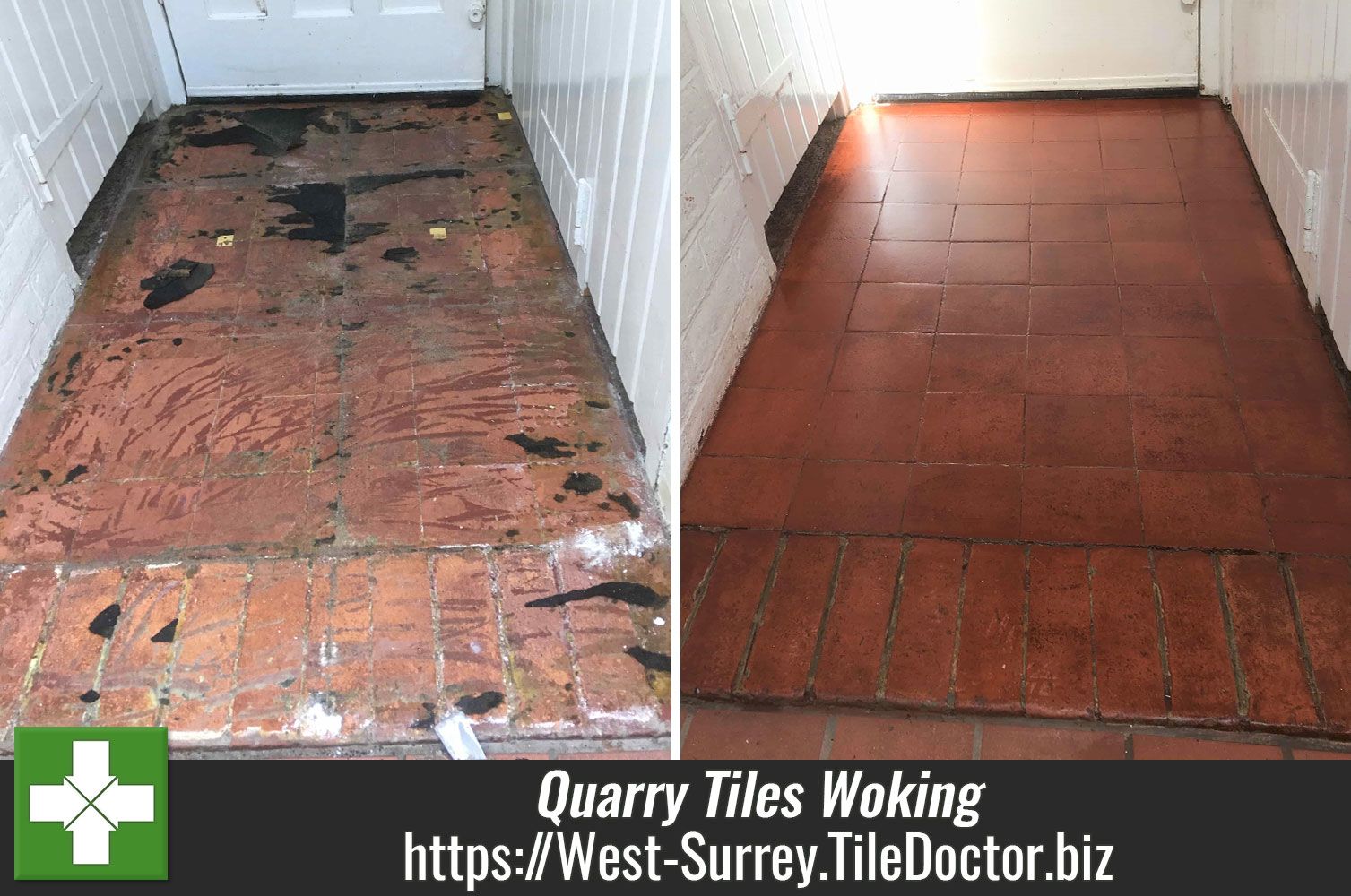Using Coarse Diamond Pads to Remove Glue and Paint from Quarry Tiles in Woking
This client has lived in the same Woking property for thirty years and had recently decided to lift the linoleum by the back door to the property. Underneath was a small rectangle of Quarry tiles and the decision was made to lift all the lino and see what could be done to restore the original floor.

My job was to fully remove the linoleum and adhesive, paint splashes and to seal the floor in what was a high traffic area. Although small, I was aware there would probably be a lot of adhesives to remove, and the tiles may be damaged underneath.
I’ve been a Tile Doctor for many years and if you look at my website, you will see I’ve tackled all sorts of Tile, Stone, and Grout situations. So confident I could restore the floor to their satisfaction and optimistic that the job would not take too long I provided a quote for the work which they were happy to accept, and a date was scheduled for my return.
Cleaning a Quarry Tiled Hallway Floor
The first task was to protect the surrounding skirting boards and door; then a strong dilution of Tile Doctor Remove and Go was applied and left to dwell for 20 minutes. This product is a strong alkaline coatings remover designed for use on Tile that breaks down adhesives and other coatings such as paint spots and sealers. Using a coarse 100-grit diamond pad fitted to a rotary buffer machine I set about scrubbing the adhesives from the surface of the Quarry tile.
This is an effective method that not only removes the glue but also cleans up the tile taking away what was probably thirty years of ingrained dirt in the process. Once done the glue and soiling was rinsed and extracted. Stubborn areas and corners were treated by hand using a 60-grit diamond block until I was satisfied the whole floor was as clean as it could be.
Sealing a Quarry Tiled Hallway Floor
As we were in the middle of the July heatwave, I was able to dry the tiles quickly, and is it was a small area there was no need to leave the floor to dry off overnight. Wet tiles mustn’t be sealed as the seal will not cure so before moving onto the next step, I took several moisture readings with a damp meter. The floor was soon within acceptable range, so I was able to apply the sealer later that afternoon.
As it was an old house and a high traffic area, I suggested sealing the floor with Tile Doctor Seal and Go Extra. This offers a very strong seal with a nice sheen. It’s not too shiny for an elderly house and will last years, it’s also breathable which is an important consideration when sealing old floors that don’t have a damp proof membrane. I applied two coats, letting them dry in-between.

My client was over the moon with the transformation and very pleased to see the back of the linoleum floor which really had seen better days. A light mop using Tile Doctor Neutral Tile Cleaner would ensure the nice sheen would stay put and the rich colour of the quarry tiles would be maintained. Tile Doctor Neutral Tile Cleaner is pH neutral so it is not harsh on the floor and will not damage the newly applied seal, like stronger household cleaners might.
